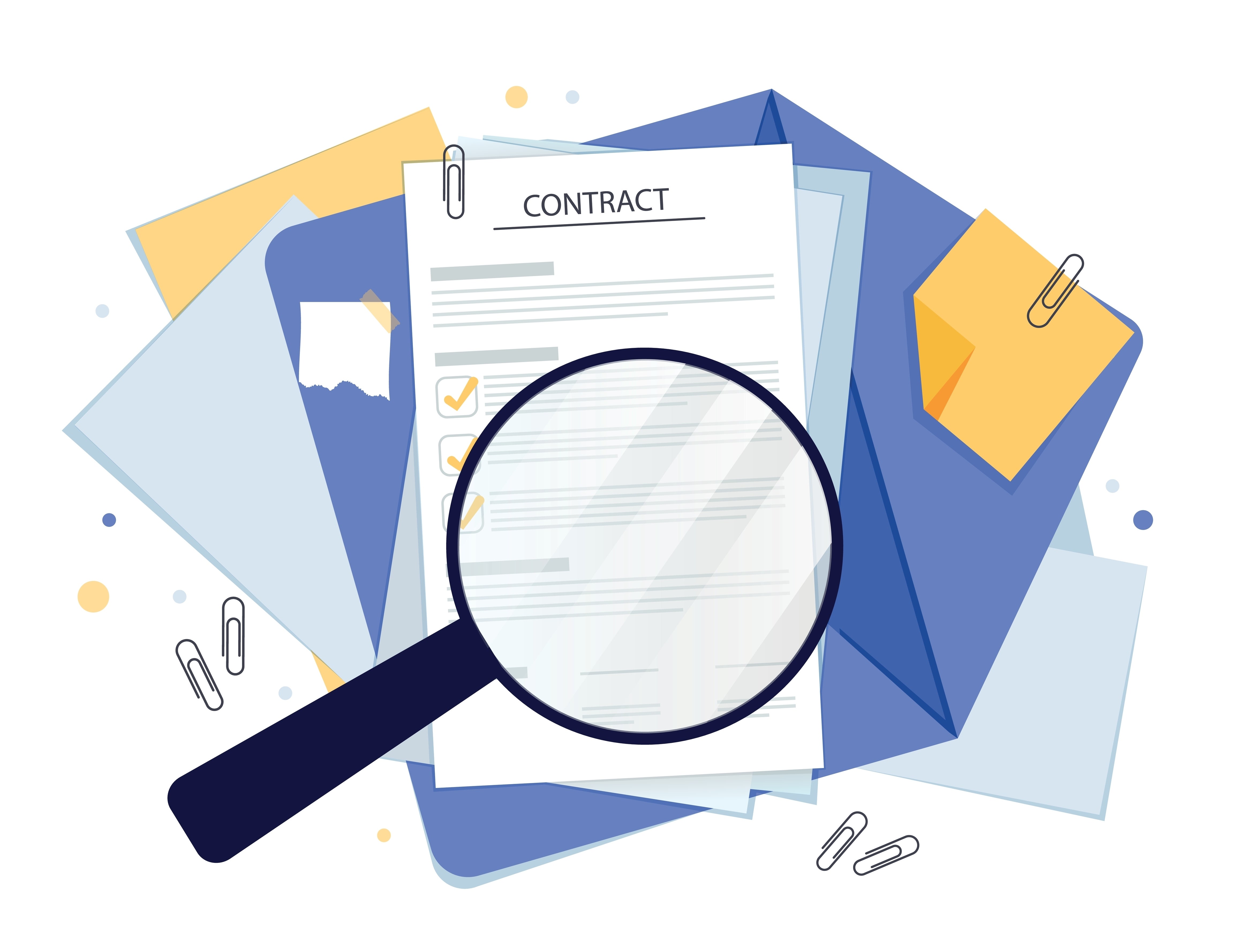Banner artwork by Na_Studio / Shutterstock.com
Cheat Sheet
- Focus on the right to exclude. Given the opportunity, how will your competitors seek to implement the invention in their products, processes, and systems? The patent application should describe and claim this, so you will own the right to exclude this conduct once a patent is granted.
- Scrutinize at least one claim set. You cannot assume an invention is well protected simply because the application includes a large number of claims. Confirm at least one claim set has the proper scope and fallback positions to meet your objectives.
- Know what the specification should and shouldn’t say. Like the criminal justice system, anything you say in a patent application can be used against you in a court of law. Make sure the application describes everything it should without using limiting words or phrases unwittingly.
- Talk to the inventors. In the ideal world, everything you need from the inventors is provided in their written invention disclosure. In the real world, you will always learn more — and sometimes the most critical information — from a follow-up discussion.
Evaluating a utility patent application prepared by outside counsel can be a daunting task, particularly if you are not a registered patent attorney. Follow these tips to streamline the process and help you ensure the application describes, claims, and illustrates the invention properly — necessary steps to provide your company with a competitive advantage.
1. Focus on the right to exclude
Contrary to popular belief, a patent does not protect your right to practice an invention. Instead, a patent provides the legal right to exclude others — most notably, your competitors — from practicing anything and everything covered by the “claims.” Therefore, your job is to ensure the claims cover everything you want to exclude your competitors from doing while distinguishing over all known information (i.e., the “prior art”).
2. Do your homework
You need to understand what the patent application should describe and claim before reviewing the application to confirm that it does. Ideally, the inventors completed a detailed invention disclosure questionnaire that provides the three things you need most:
- An overview of the invention and how it will be implemented in your company’s business,
- An overview of the closest prior art, and
- An overview of how your competitors would likely implement the invention (if not patented) in their products, systems, etc.
Additionally, you should have a discussion with the inventors (who are also reviewing the patent application prior to filing) to help you better understand the three items above. As part of that discussion, make sure the inventors provided all information requested by the invention disclosure questionnaire, and inquire whether the inventors have learned of any additional prior art, thought of additional alternatives or ways to implement the invention, etc. that are not listed in the previously submitted invention disclosure.
The inventors should also confirm the patent application (1) provides enough information for a person reasonably skilled in the art to make and use the invention without undue experimentation (the “enablement” requirement) and (2) discloses the inventors’ preferences related to the claimed invention (the “best mode” requirement).
3. Choose one independent claim to begin
The claims are the numbered, run-on sentences that appear near the end of the patent application, after the “specification” (i.e., the background, summary, and detailed description sections). If there are several independent claims (i.e., claims that do not refer to any other claim), determine which one you will choose if the Patent Office restricts examination of the application to only one independent claim. Begin your review with that claim.
4. Pressure test the independent claim
Consider whether the independent claim may be too broad or too narrow. For example, if the claim “reads on” a known product or system — because the known product or system includes every feature recited by the claim — the claim is overly broad and unpatentable. Conversely, if a competitor can implement the invention in their business without including every feature recited by the claim, the claim is too narrow and the competitor will evade infringement.
If a competitor can implement the invention in their business without including every feature recited by the claim, the claim is too narrow and the competitor will evade infringement.
Further, a claim that distinguishes over the prior art may still be too broad for your objectives. For example, if you want an intermediate scope claim to protect a specific product type, make sure the claim does not encompass other product types as well. Otherwise, the claim may encompass more prior art than necessary and be unpatentable for that reason.
5. Evaluate its dependent claims
Next, you want to review the “dependent claims” that refer to your chosen independent claim. For example, dependent claim 2 may refer to “the system of claim 1,” and dependent claim 3 may refer to “the system of claim 2.” Claims 2 and 3 both depend (directly or indirectly) from independent claim 1.
Dependent claims serve two important purposes. First, they generally clarify that the independent claim is broader and does not require the additional limitations recited by the dependent claims.

Second, they can provide critical fallback positions if the independent claim is determined to be unpatentable. For example, if independent claim 1 is invalidated after a patent is granted, the additional feature(s) recited by dependent claim 2 (in combination with the features of claim 1) may still be valid and enforceable. Therefore, careful consideration should be given to these claims and the fallback positions they provide.
6. Review the other claims
After completing your review of the first claim set, repeat the process for the other claim set(s). Typically, an application will include multiple sets of claims having different scopes (i.e., broad, intermediate or narrow) or directed to different statutory classes (i.e., a process, machine, article of manufacture, or composition of matter). Therefore, the application may include, e.g., one set of claims directed to a novel device, another set of claims directed to a system that includes the novel device, and a third set of claims directed to a process performed by the novel device or system.
Additionally, you may need additional claim set(s) directed at a competitor’s product, process, or system, especially if there are significant technical differences that make it difficult for a single independent claim to cover, e.g., both your company’s product and a competitor’s product and still distinguish over the prior art.
7. Confirm the specification describes everything claimed
The claims will be interpreted in the context of the specification. Therefore, it is critically important for the specification to describe everything claimed, and to do so in such a way that supports the intended scope and meaning of the claims. For this reason, many patent attorneys draft the claims first, and then prepare a “claim-centric” specification that describes most elements and features of the invention as optional using open-ended terms like “may,” “including,” “and/or,” “preferably,” “optionally,” etc. The specification should also describe multiple example embodiments of the invention since describing only one example embodiment can result in a narrower claim interpretation.
It is critically important for the specification to describe everything claimed, and to do so in such a way that supports the intended scope and meaning of the claims.
After the patent application is filed and examined, claim amendments may be required to overcome positions or prior art cited by the Examiner. These claim amendments, however, must be supported by the specification. The claims cannot be amended to recite “new matter” that was not disclosed in the original application. Similarly, the Examiner may reject a claim amendment that results in a new combination of features absent “spec support” for that particular combination. For these reasons, the specification will ideally provide support for every novel combination and permutation of claimed features.
Critiquing the specification is usually not a simple task — you may need to read and digest the summary and detailed description sections in their entireties — but it is necessary to ensure the specification will support the intended meaning and scope of both the original claims and any subsequently amended claims.
8. Look for “bad words”
Ironically, describing “the invention” or “the present invention” can lead to a narrower interpretation of the claims and should therefore be avoided.
Likewise, if the specification describes certain elements or features using strong or absolute terms such as “required,” “necessary,” “critical,” “essential,” etc., the claims may be interpreted to require the “critical” elements or features.

Similarly, if the specification describes “objects of the invention,” the claims may be interpreted to exclude anything that does not meet the stated objects. Accordingly, the best practice is to avoid using “objects of the invention.”
9. Ensure the drawings illustrate all claimed features
If the claims recite a feature that is not shown in the drawings, the Examiner may object and require an amendment to the drawings to illustrate the claimed feature. This, in turn, can lead to “new matter” issues if the Examiner concludes the amended drawings show more than what was disclosed in the patent application as filed. Fortunately, you can avoid the hassle, expense and uncertainty associated with these drawing amendments by ensuring the original drawings show each and every feature recited by the claims.

10. Beware of the background
For the most part, the background section of the application can only hurt you. For example, if the background describes various problems with known products or systems, the claim scope may be restricted to only products or systems that solve all described problems. Further, if the background attempts to bridge the gap between the prior art and the invention, e.g., by describing “what is needed in the art,” this can make the invention seem trivial and obvious rather than a patentable step forward.
For these reasons, you want a short background that merely provides a general overview of the relevant technology. To the extent the invention solves problems in prior art designs, the best place to disclose this is in the detailed description, especially if the inventors were the first to recognize the problems.
Protect the company’s IP
You can add great value and help protect your company’s interests by ensuring the patent application:
- Claims everything you want to exclude your competitors from doing;
- Properly describes everything claimed and all potential feature combinations; and
- Illustrates all claimed elements of the invention.
Disclaimer: The information in any resource in this website should not be construed as legal advice or as a legal opinion on specific facts, and should not be considered representing the views of its authors, its sponsors, and/or ACC. These resources are not intended as a definitive statement on the subject addressed. Rather, they are intended to serve as a tool providing practical guidance and references for the busy in-house practitioner and other readers.




